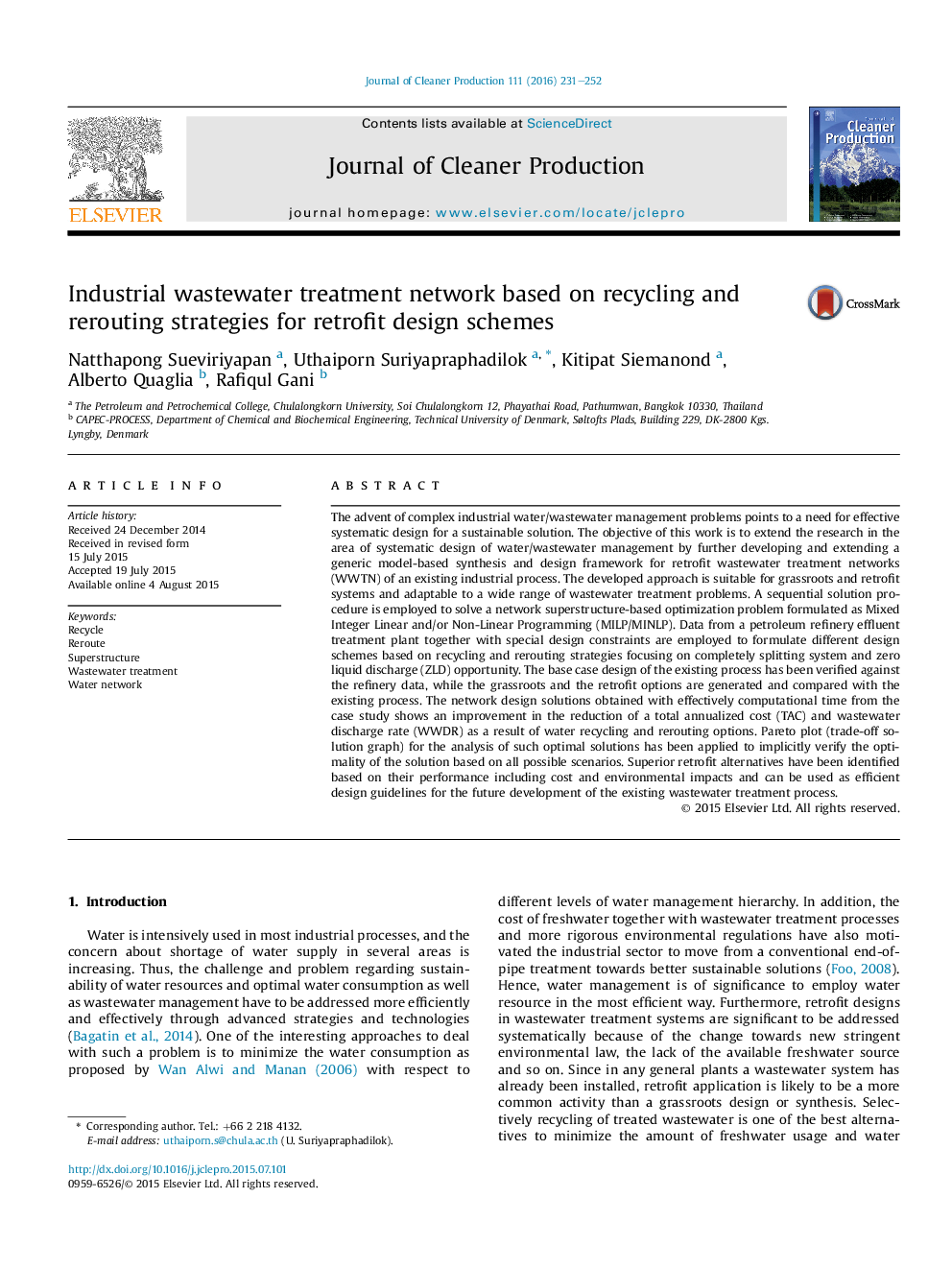| Article ID | Journal | Published Year | Pages | File Type |
|---|---|---|---|---|
| 1744383 | Journal of Cleaner Production | 2016 | 22 Pages |
•Wastewater treatment network has been employed in an existing industrial case study.•Different scenarios with proposed treatment strategies have been investigated.•A network superstructure has been applied to determine the optimal processing path.•The model has the capability to handle new system and retrofit existing processes.•The optimal solutions can be employed as a guideline for further development.
The advent of complex industrial water/wastewater management problems points to a need for effective systematic design for a sustainable solution. The objective of this work is to extend the research in the area of systematic design of water/wastewater management by further developing and extending a generic model-based synthesis and design framework for retrofit wastewater treatment networks (WWTN) of an existing industrial process. The developed approach is suitable for grassroots and retrofit systems and adaptable to a wide range of wastewater treatment problems. A sequential solution procedure is employed to solve a network superstructure-based optimization problem formulated as Mixed Integer Linear and/or Non-Linear Programming (MILP/MINLP). Data from a petroleum refinery effluent treatment plant together with special design constraints are employed to formulate different design schemes based on recycling and rerouting strategies focusing on completely splitting system and zero liquid discharge (ZLD) opportunity. The base case design of the existing process has been verified against the refinery data, while the grassroots and the retrofit options are generated and compared with the existing process. The network design solutions obtained with effectively computational time from the case study shows an improvement in the reduction of a total annualized cost (TAC) and wastewater discharge rate (WWDR) as a result of water recycling and rerouting options. Pareto plot (trade-off solution graph) for the analysis of such optimal solutions has been applied to implicitly verify the optimality of the solution based on all possible scenarios. Superior retrofit alternatives have been identified based on their performance including cost and environmental impacts and can be used as efficient design guidelines for the future development of the existing wastewater treatment process.
Graphical abstractFigure optionsDownload full-size imageDownload as PowerPoint slide
